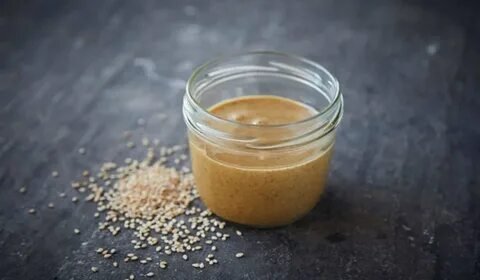Introduction
Tahhiini (also spelled tahini) is a creamy sesame paste central to Middle Eastern and Mediterranean recipes. Rich, nutty, and versatile, it’s key in hummus, sauces, and desserts.
What Is Tahhiini?
Tahhiini is a smooth paste made from ground sesame seeds. It’s deeply rooted in Middle Eastern cuisine and widely used in Mediterranean recipes. The term often appears as “tahini” in English.
It delivers a rich, earthy flavor and silky texture that enhances dishes like hummus, baba ganoush, and halva.
History & Cultural Roots
Tahhiini traces back thousands of years. Sesame cultivation appears in texts from Mesopotamia around 3000–3500 BCE.
Early recipes—like hummus kasa from a 13th‑century Arabic cookbook—hint at tahhiini’s long‑standing culinary role.
Its use spread across regions—Egypt, Turkey, Levant, Greece—each weaving tahhiini into their iconic dishes.
How Tahhiini Is Made
- Select sesame seeds – use hulled for smoother texture, unhulled for a deeper flavor.
- Toast lightly – enhances nuttiness; easy to overheat, so watch closely.
- Grind into paste – blend seeds (often with a small amount of oil) until smooth.
- Optionally add oil and salt – to adjust consistency and flavor.
The result: a silky sesame paste with robust flavor and creamy mouthfeel.
Nutrition & Health Benefits
Tahhiini is a nutritional powerhouse. Over half of its calories come from healthy unsaturated fats.
It’s rich in protein, and minerals like calcium, magnesium, iron, and zinc—vital for bone health and metabolism.
It also contains antioxidants (lignans) that help combat inflammation and support heart health.
Versatile Culinary Uses
Middle Eastern Classics
- Hummus – chickpeas blended with tahhiini, lemon, garlic.
- Sauces/dressings – mix tahhiini with water, garlic, lemon juice. Perfect for meats, vegetables.
- Halva and desserts – a sweet treat based on sesame paste.
Creative & Contemporary Uses
- Baking – adds nutty depth to cookies, brownies, banana bread.
- Breakfast – swirl into oatmeal or spread on toast with banana and honey.
- Smoothies and dressings – enriches flavor and texture.
Making Tahhiini at Home
- Use a food processor—seeds go from crumbs to creamy paste with patience.
- Add oil gradually for the perfect pourable texture.
- Troubleshoot: If blending is tough, up the batch size or add more oil.
- Store smart: Keep in a cool place or fridge. Stir separated oil back in before use.
Choosing & Storing Tahhiini
- Found in grocery international sections or Middle Eastern markets.
- Look for hulled seeds for milder taste; unhulled for richer flavor and fiber.
- Store in the pantry short term, refrigerate for longer freshness.
Summary Table
| Feature | Details |
| Main Ingredient | Sesame seeds (hulled or unhulled) |
| Flavor Profile | Nutty, slightly bitter, creamy |
| Uses | Hummus, dressings, baking, breakfasts, sweets |
| Health Benefits | Healthy fats, protein, minerals, antioxidants |
| Preparation | Toast, grind, mix with oil; store well |
Conclusion
Tahhiini (aka tahini) is a centuries‑old, nutrient‑rich gem from Middle Eastern and Mediterranean cuisine. Made from sesame seeds, it brings creamy texture and bold flavor to both savory dishes like hummus and sweet treats. Easy to make at home and full of health perks, it’s a kitchen staple that deserves a spot in every pantry.
FAQs
1. What’s the difference between tahhiini and sesame paste?
They’re nearly the same. Sesame paste in East Asia may use roasted seeds and be darker.
2. Can I use raw seeds instead of toasting?
Yes—but toasting enhances flavor. Raw tahhiini is lighter in taste.
3. How long does tahhiini last?
Unopened, it lasts months in a pantry. Once opened, store in the fridge for freshness.
4. Is tahhiini vegan and gluten-free?
Yes—naturally free of animal products and gluten.
5. Why does oil separate on top?
That’s normal. Stir before use to restore creamy texture.

